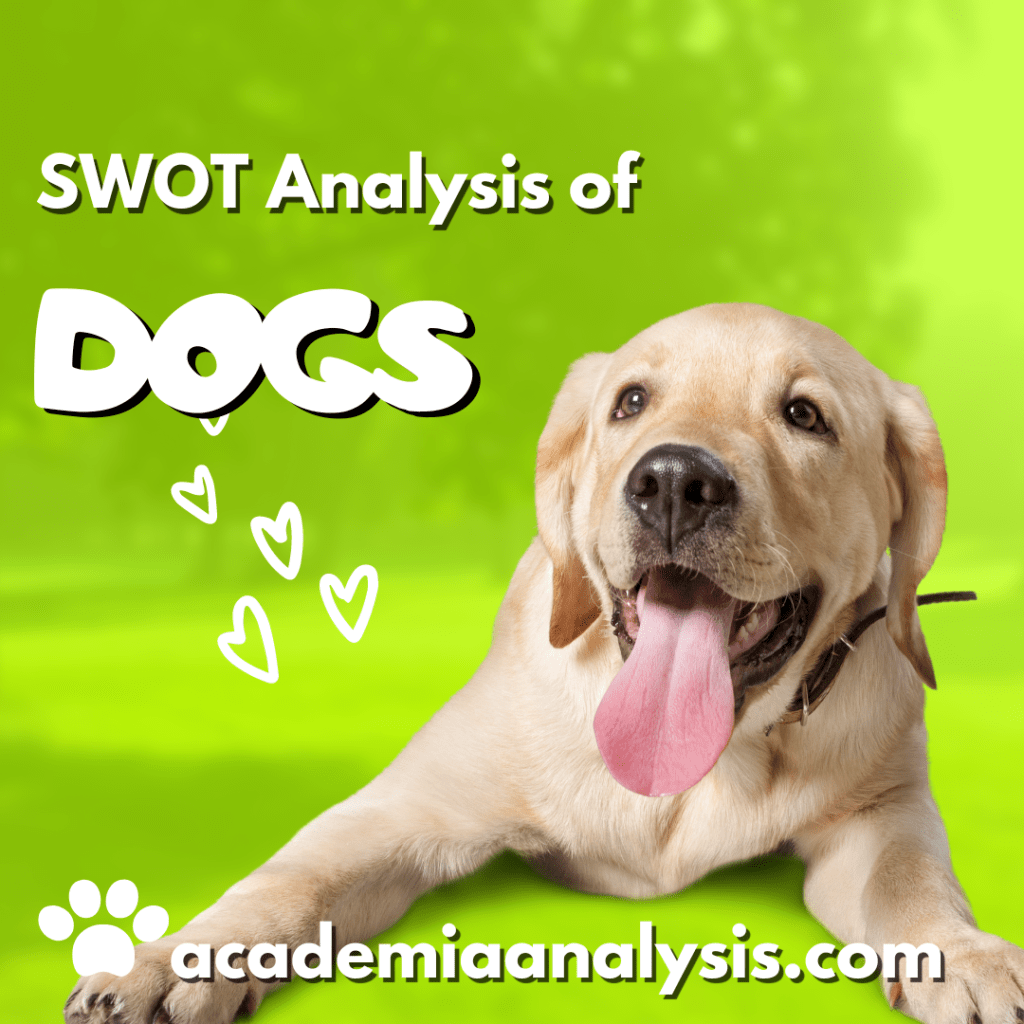The dog grooming industry, a thriving component of the broader pet care market, is a sector of increasing interest for business professionals, pet enthusiasts, and entrepreneurs alike. Dog grooming is a specialized field requiring a unique set of skills, and as the love for pets continues to surge worldwide, it provides a potentially lucrative business opportunity. However, before delving into any industry, a thorough examination of its strengths, weaknesses, opportunities, and threats (SWOT) is essential.
A SWOT analysis is a structured planning method used to assess these four elements. This article aims to provide an in-depth SWOT analysis of the dog grooming business.
Strengths
A fundamental strength of the dog grooming industry lies in its demand resilience. The human-dog bond transcends mere ownership to a realm of companionship, where dogs are often considered integral family members. Consequently, the willingness to invest in their care and well-being is high, making the industry somewhat immune to economic fluctuations.
The second strength lies in the growing awareness and recognition of professional grooming’s importance. It is not just about maintaining the dog’s physical appearance, but more importantly, it contributes to their overall health and well-being. Regular grooming can help prevent potential health issues, such as skin disorders, parasitic infestations, and diseases related to poor dental hygiene.
The low barrier to entry is another strength of the dog grooming industry. With basic training and minimal start-up costs, an individual can initiate a dog grooming business. This accessibility opens the sector to a wide range of potential business owners, from professional groomers looking to branch out on their own to dog enthusiasts seeking to turn their passion into a profession.
Weaknesses
Despite the noted strengths, the dog grooming industry is not devoid of weaknesses. The primary weakness arises from the intensive nature of the work involved. It requires physical endurance, patience, and the ability to handle potentially aggressive or anxious animals. The stress and potential for injury can lead to high employee turnover rates, posing challenges in maintaining a skilled, reliable workforce.
Another weakness is the inconsistency in demand. While the industry is generally resilient, demand can fluctuate based on seasonal factors. For instance, grooming services may be in higher demand during warmer months when dogs’ coats can become uncomfortable.
Additionally, the industry faces a lack of standardized regulation and certification. This absence of a governing body could lead to variability in the quality of services provided, potentially affecting the industry’s reputation and customer trust.
Opportunities
The dog grooming business is rife with untapped opportunities. One of the most significant is the potential to expand services. Beyond basic grooming, businesses can offer a range of services, including specialized grooming for different breeds, mobile grooming services, grooming products retail, pet sitting, or even doggy spa treatments.
The rise of digital platforms presents another opportunity. Businesses can leverage the power of the internet for various purposes, such as online bookings, virtual consultations, and digital marketing. A strong online presence can increase visibility, improve customer engagement, and potentially attract a larger customer base.
A growing trend of pet humanization, where pets are increasingly treated with the same level of care as human family members, also presents a fertile ground for the growth and expansion of the dog grooming business. The market for luxury pet services is booming, and businesses that can cater to this demand are well-positioned for success.
Threats
However, the path is not entirely clear of threats. A significant threat to the dog grooming industry is the growing popularity of DIY grooming. As more dog owners acquire grooming skills and equipment, they may opt to groom their pets at home, reducing the demand for professional services.
Lack of industry regulation can also be a double-edged sword. While it lowers barriers to entry and fosters competition, it also means that any ill-equipped individual can start a dog grooming business. This lack of quality control can lead to poor service experiences, which could potentially damage the overall reputation of the industry.
Moreover, the dog grooming business is exposed to economic instability. Even though it has demonstrated resilience, there may be economic downturns so severe that they impact consumer spending across all sectors, including pet care. During such times, dog owners might consider grooming a luxury rather than a necessity, leading to reduced demand.
Industry faces potential threats from evolving societal attitudes towards pet ownership and care. As debates about ethical treatment, animal rights, and the environmental impact of pet care products gain momentum, businesses must navigate these issues carefully to avoid falling afoul of changing social norms and expectations.
Conclusion
Dog grooming business, like any other, has its strengths, weaknesses, opportunities, and threats. While the industry offers promising opportunities due to the human-dog bond, growing awareness of pet care, and low entry barriers, it also faces challenges including the physically intensive nature of the work, fluctuating demand, and the lack of regulation.
Opportunities for growth and expansion are numerous, from diversifying services to leveraging digital platforms and tapping into the luxury pet care market. However, threats from the rise of DIY grooming, potential economic downturns, and evolving societal attitudes must be factored into strategic planning.
Ultimately, a thorough understanding and strategic utilization of this SWOT analysis can equip current and prospective dog grooming business owners to make informed decisions, effectively navigate the business landscape, and optimize their prospects for success. The key lies in maximizing and building upon the industry’s strengths and opportunities while proactively addressing its weaknesses and mitigating potential threats.






